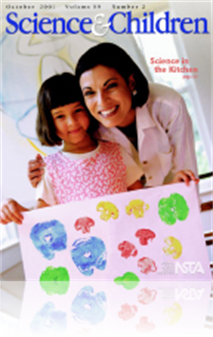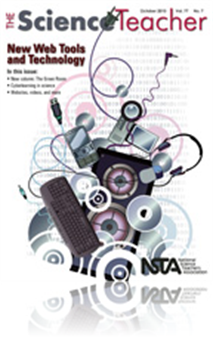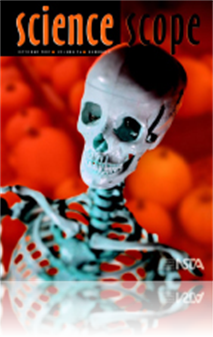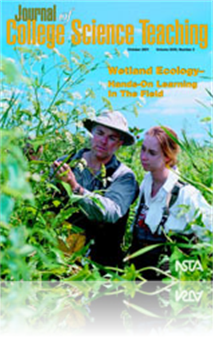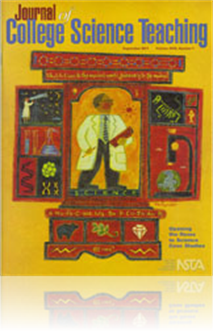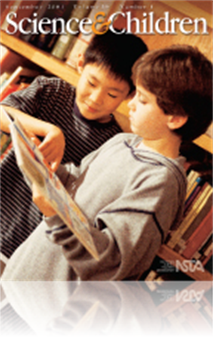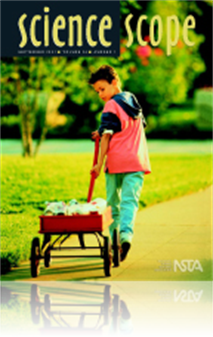All Resources
Journal Article
The ABCs of Assessment: Aligning assessment with instruction
Assessment often carries a negative connotation, but it is as important as curriculum and instruction and needs to be viewed as a positive enhancement of learning. To be comprehensive, assessment must be authentic, resembling the classroom experience...
Journal Article
Outside Learning: It’s Elementary
Through a partnership with elementary teachers at Main Elementary School in Rome, Georgia, 42 children (one third-grade class and one fourth-grade class) learned how to use newspapers to rebuild slopes on their schoolgrounds that had been eroded by r...
Journal Article
Enabling Science: NSF's Program for Persons with Disabilities
To promote greater inclusion of disabled students in science classrooms and to address the underrepresentation of persons with disabilities in science and engineering careers, the National Science Foundation (NSF) established its Program for Persons ...
Journal Article
Using toys to teach basic physical science concepts is a great way to engage students through hands-on experience with familiar objects. This article contains several activities that use toys to help students investigate average speed, acceleration, ...
Journal Article
Centimeters, Millimeters, and Monsters
The activity described in this article reinforces metric skills as preservice teachers design monster clothes for an imaginary monster wedding. The humorous activity also demonstrates how the process skills of estimation and linear measurement can be...
Journal Article
Someone’s in the Kitchen with Science
The kitchen is a natural source of science exploration and a great place for young children to develop and practice their science process skills. These easy-to-do activities require few materials, address the National Science Education Standards, int...
Journal Article
Research and Teaching: Student Understanding of Ionizing Radiation and Radioactivity
Results from research into the teaching and learning of physics have shown that many college students have significant conceptual and reasoning difficulties relating to topics of radioactivity. Interviewing students from three different science backg...
Journal Article
Science and Children’s editor shares thoughts regarding the current issue, asking you to note how important "communication" is among the participants in the featured exciting elementary science activities....
Journal Article
Textbook Alignment: Aligning the curriculum with benchmarks and standards
Why is alignment so important? What difference does it make if textbooks include activities that are not aligned? The Benchmarks for Science Literacy and the National Science Education Standards include in their science literacy recommendations a num...
Journal Article
Commentary: Science the Write Way
An opinion piece about the rapid advances in science and the challenges it represents for classroom teachers....
Journal Article
Commentary: Science and Service Learning
An opinion piece about a successful service learning project in which students used research on plant types to bring a lively activity to local nursing home residents....
Journal Article
As an extra credit activity, teachers can let students take turns teaching class using the “each one teach one” approach. Student groups select an activity, write a lesson plan and worksheet, and present their adapted activity to their classmates...
Journal Article
Scope on the Skies: I'm on top of the world
This column focuses on astronomy throughout the year. In this month’s issue find out if there's actually a top or a bottom to the Earth?...
Journal Article
How Do Children Know What They Know?
New teachers often enter the classroom with a general knowledge of what they can expect in a particular age group of children, but they quickly discover, usually by trial and error, precisely what their students actually know and can do. In the follo...
Journal Article
Don't Settle for Imitation Laboratory Assignments
Science courses often offer structured laboratory exercises that do not provide students with a thorough understanding of how to conduct scientific research. Westfield State College’s Animal Behavior course requires students to design their own res...
Journal Article
Personalizing the Goals of Undergraduate Research
Research experiences are becoming increasingly available for undergraduate science students. Although many undergraduate research programs are designed with assessment-friendly outcomes as stated goals, a more personalized approach in goal setting ca...
Journal Article
Individual teacher membership and use of the National Science Education Standards are vital to attaining the goal of an inquiry science experience for all students. Membership in professional organizations and NSES use are linked with desirable class...
Journal Article
Idea Bank: Investigating Science Careers Online
The Idea Bank provides tips and techniques for creative teaching, in about 1,000 words. This month’s Idea Bank features ways students can use the Internet to research careers in science and engineering. ...
Journal Article
Alzheimer’s Disease Under Scrutiny
After reading a newspaper article on Alzheimer’s disease, an incurable medical problem involving gradual and debilitating loss of memory, students examine the key elements of the scientific method as conveyed in the story. During their analysis, st...
Journal Article
“We love science! We love science!” cried the first- and second-grade students at Rice Lake Elementary School in Lino Lakes, Minnesota. The science program for primary grade students here is so good that students wanted more. To satiate their add...
Journal Article
The Science-Mathematics Connection: Using technology in an interdisciplinary module
This workshop uses technology-based modules that emphasize multicultural instructional activities, materials, tools, and assessment for integrating concepts in Earth science, algebra, geometry, and statistics. Instruction in the culturally responsiv...
Journal Article
Science teachers face many hurdles in their quest to train young minds to understand the precise planning, thinking, and actions required for success in this field of study. Read about the GLOBE (Global Learning and Observations to Benefit the Enviro...
Journal Article
Exploring Alternative Conceptions
Teaching is an inexact science. Even experienced teachers have difficulty assessing the effectiveness of their lessons and students’ mastery of concept. Teachers must be particularly careful to avoid introducing or reinforcing student misconception...
Journal Article
Commentary: Building on Strengths
An opinion piece about being positive with students....
Journal Article
Although the analemma derives from days when advances in technology meant building a more accurate sundial, the hands-on process of incrementally constructing a model of the analemma is still a worthwhile educational experience. It teaches science, p...
Journal Article
Chemistry Rocks: Redox chemistry as a geologic tool
Teachers can use students’ interest in the color in rocks as a starting point for a redox chemistry lesson. In this activity, each group of students examines one or more of the rocks. By matching a rock’s color to a form of iron allows students t...
Journal Article
All That Glitters May Not Be Gold
In this decision case, a congressional staffer must weigh a number of competing needs, including the popular reactions to genetically modified organisms (GMOs) and the need to eliminate vitamin A deficiency, in deciding how to present information to ...
Journal Article
Editor's Corner: Making a Difference
The Science Teacher’s editor shares thoughts on the current issue, as well as one of the authors sharing stories and background on her teaching career....
Journal Article
Rice is Rice, Right? Who knew that rice could facilitate inquiry?
Inquiry in the classroom can take many forms. The hands-on activity in this article is an economical and simple way to spark the inquiry process. Who knew that rice could facilitate inquiry?...
Journal Article
It was students’ fascination with the television show Survivor that led the author to incorporate the novels Shipwreck at the Bottom of the World (Armstrong 1998) and Carry On, Mr. Bowditch (Latham 1983) into the science curriculum. For four and a ...
Journal Article
Idea Bank: Building a Periodic Table
The Idea Bank provides tips and techniques for creative teaching, in about 1,000 words. In this month’s Idea Bank, an introductory unit on the periodic table of elements is adapted for a blind physical science student, and this unique adaptation en...
Journal Article
After the Bell: Bridging the Knowledge Gap
Driving over bridges may be a daily activity for many of us. But, do we ever consider the scientific factors that keep bridges intact and functioning when we go over them? This article offers suggestions for how to begin a scientific exploration of b...




